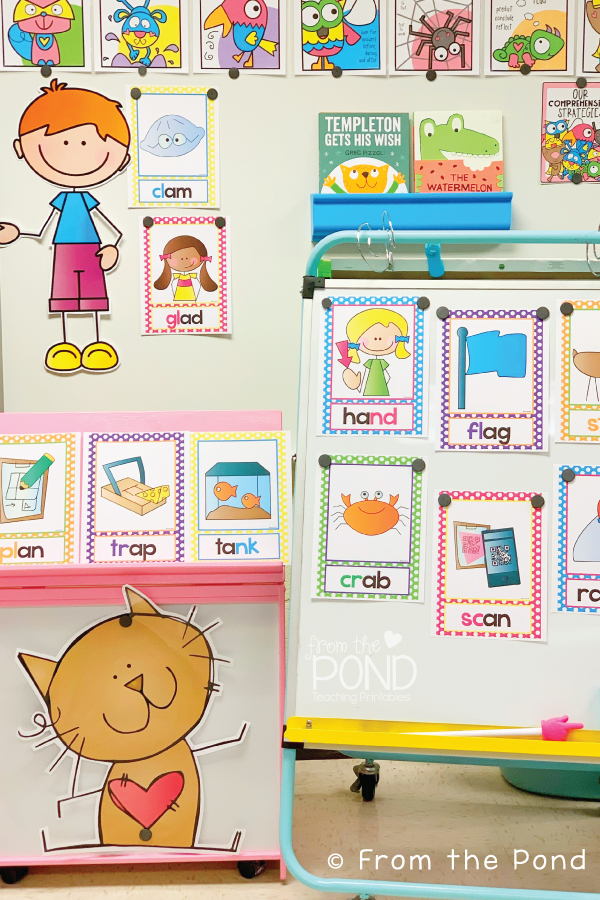Learning blends in kindergarten and first grade
Blends Bonanza will help you move on from cvc words with your little learners after they have mastered blending 3 single letter sounds.
Word building sequence
We recommend introducing your word-building in the following order:
- single sounds (alphabet sounds)
- cvc words (introduce with a focus on short medial vowel sound)
- consonant blends (initial and final position)
- consonant digraphs
- vowel sounds and other 'harder' sounds
Teaching Blends after cvc Words
ccvc and cvcc
- After cvc words look at words that have two consonants in the initial or final position of a word.
- It makes more sense if students move from cvc to ccvc,to learn blends. Why? Because the only difference between a cvc and a ccvc is one extra consonant. They'll learn it in a snap.
- For example, it is better to teach the blend "cl" with resources that features words like clam, clip and club (all ccvc words) than 'clothes', 'cloud' and 'clever'.
- Because there are not too many words in ccvc and cvcc format, you will need to structure your program based on a short vowel sound focus - not a blends focus. For example, one week you can teach a host of ccvc words that have the short a in the medial position.
- This is very achievable, as students pick up blends so quickly. They are easier to learn that tricky digraphs that make a whole new sound - like oi or ou.
- Consonant blends look like they sound. Once students learn a few, they pick up the others quickly.
All the resources in our new Blends Bonanza pack will help you introduce and teach blends in ccvc and cvcc format!
Vocabulary
- You may also have to 'teach' some new vocabulary with our resources - just a few. We have used some ccvc words that may not be overly familiar "stag' for example (male deer).
- Little learners will learn these new words quickly as part of an overall focus for the week. Your first activity for the week should be to introduce a bank of words and discuss them. Perfect timing!
- When you have a short vowel focus to your program, your students will be learning multiple blends at the same time - for example if you do 'short a' first, they could focus on plan, tank, trap and ramp all on one day.
- What ties them together is the short vowel, not the blend.
Blends Bonanza
This packet of resources would follow on very well from our "Words Train" resource, that helps learn cvc words. Although it is not necessary. This resource encourages students to build and make cvc words to gain and understanding of cvc words.
When you use a framework like this for word work, where students are 'building' the word on a structure, it makes learning blends SUPER easy. You just show students how you are making one letter to one of the cards. During your very first lesson on blends, make a cvc word with the coloured cards, and then physically write a new letter on one of the existing cards - so in the image below - b, a, t would become br, a, t and the students could see very clearly how easy it is to add a new letter and make a new word.
For blends, I would recommend that you print and use the posters to help introduce the students to your focus words for the week.
I printed these '2 to a page'.
The bundle includes worksheets where students can cut and paste to build the word. Write'n'Wipe cards are also available to use in a literacy centre or small group.
The word building mats are very similar to the ones in my cvc packet, incorporating colours for each section of the word. This will assist your students in recognising the blend as one chunk within the word. You can use them with letter brick, magnetic letters, or my favourite - dry erase markers.
Blends Bonanza is in my TpT store HERE
New In Store: Valentine's Day Craft
I would also love to show you a little practical printable writing activity for Valentine's Day - or any time of the year!
Get to know your students and what they love! They will write an answer to each sentence starter on the flaps of the cupcake and staple their pages togethers.
You may like to let your students pass their cupcakes around so they can get to know one another.










